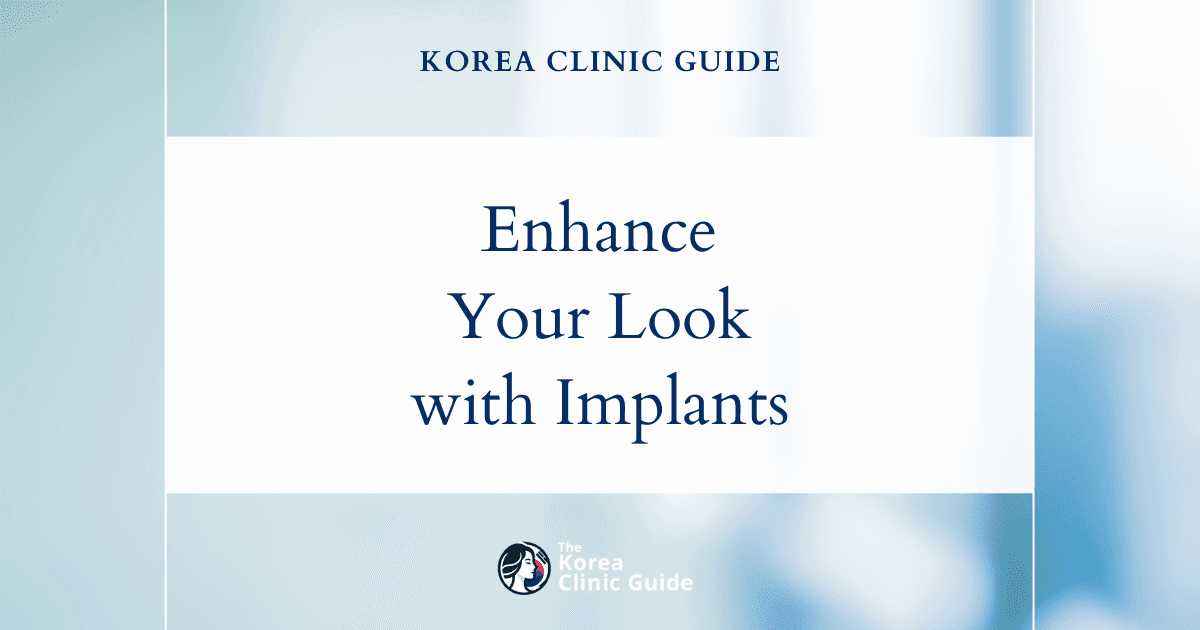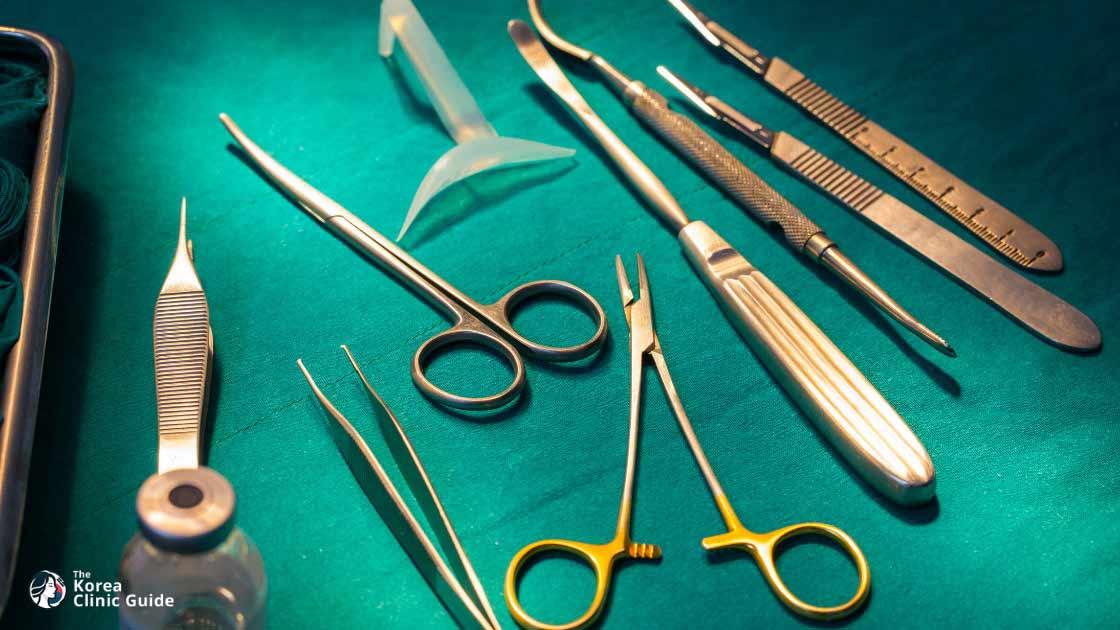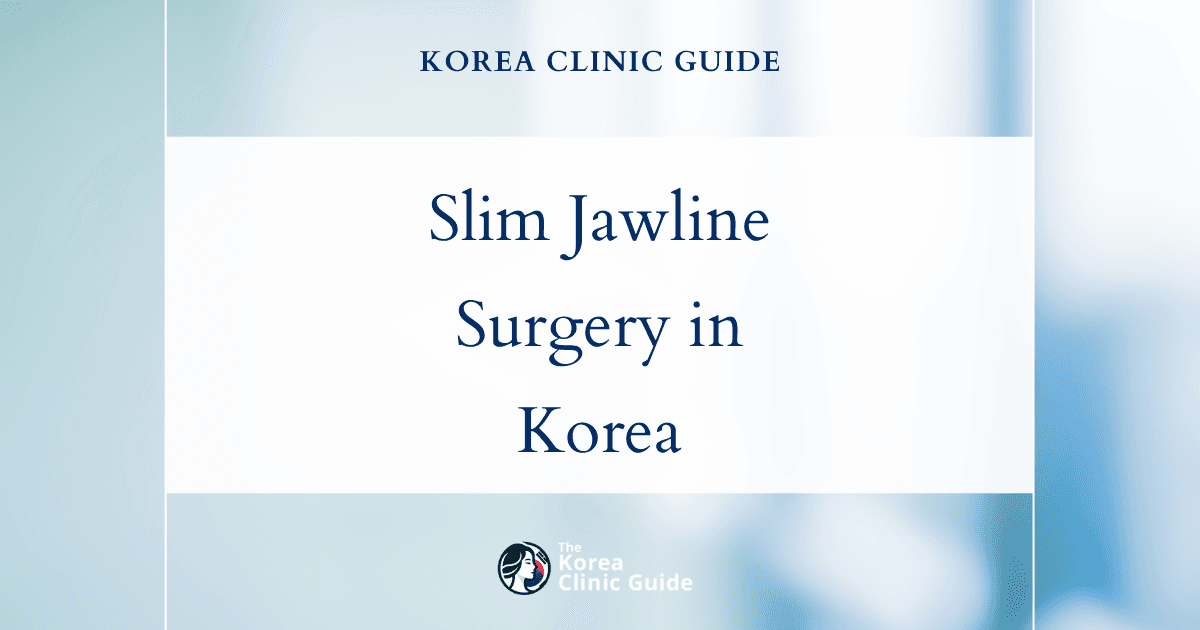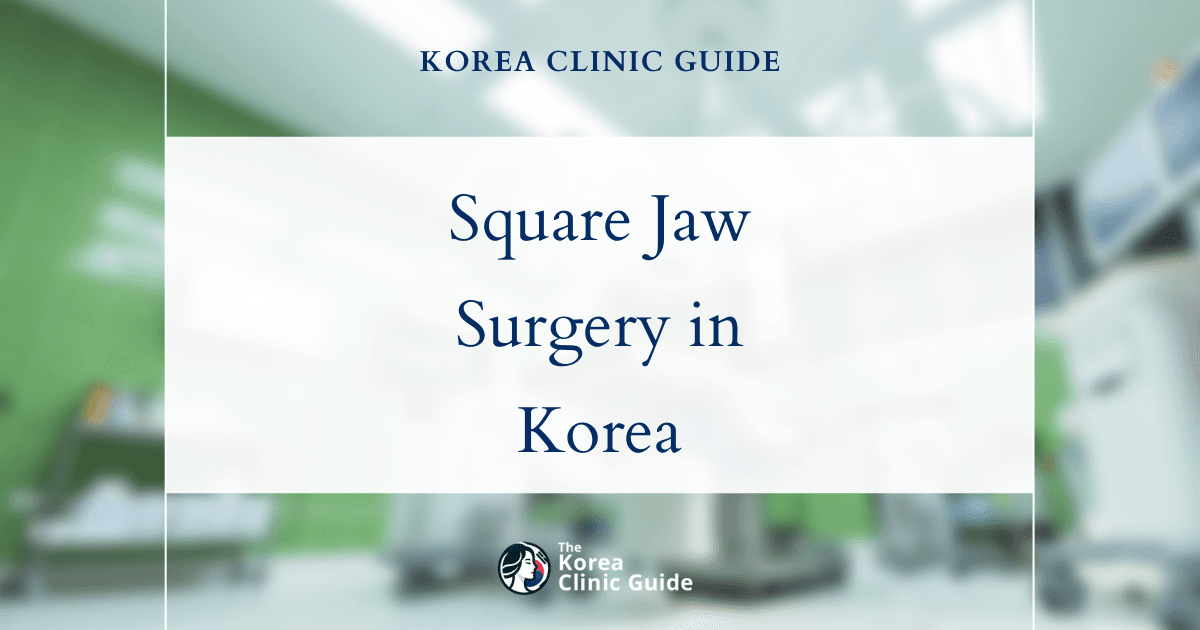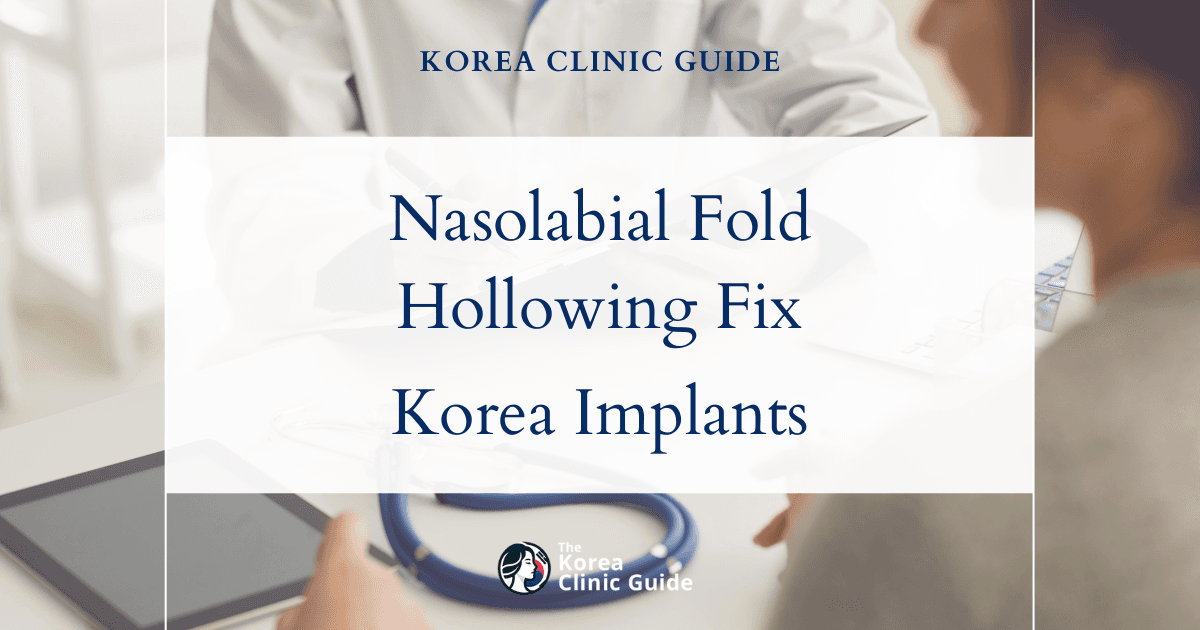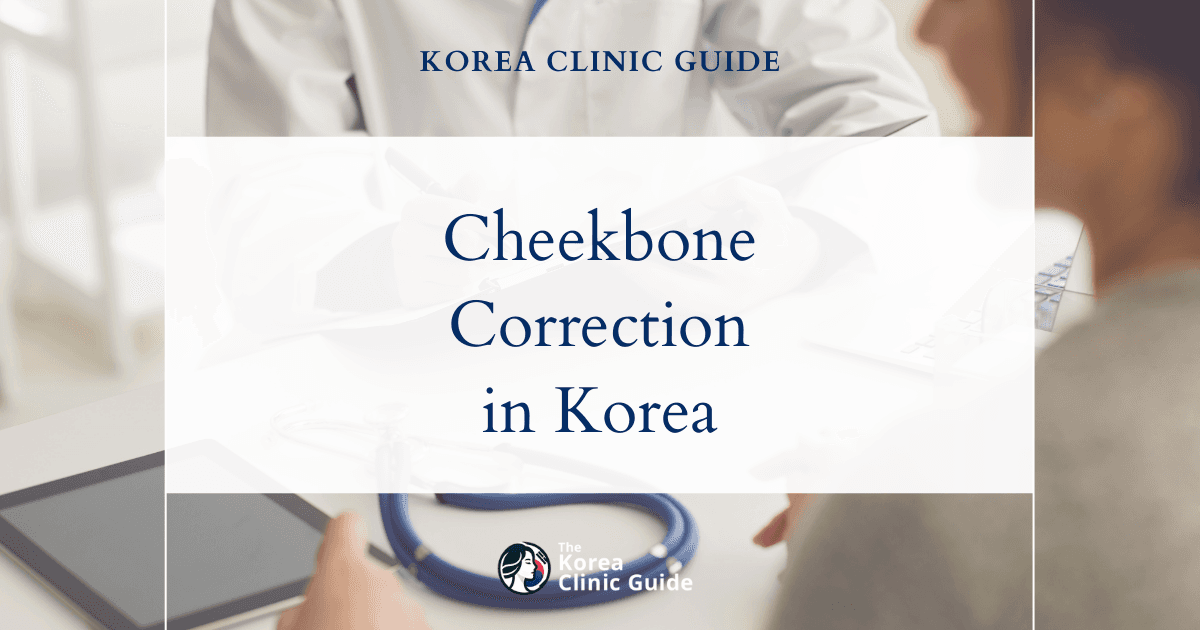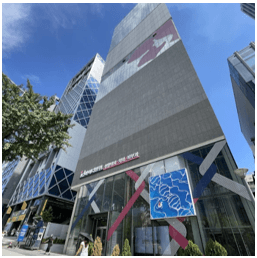Medical Tourism Blog
Facial Implant in Korea | Best Clinics, Costs, Procedure Types & More

Table of contents
- What Is Facial Implant?
- Best Clinics in Korea for Facial Implant
- Getting Facial Implants in Korea
- Cost of Facial Implant in Korea
- Alternatives to Facial Implant
- Conclusion
Considering treatment in Korea? Everything you need to know e.g. — how to avoid scams, visas, interpreters, recovery tips — in our Medical Tourism Master Guide. Plan with confidence in minutes, not weeks!
Imagine achieving your ideal facial balance and symmetry with the precision and artistry of Korean cosmetic surgery. In this guide, we explore how facial implants have become a transformative solution for enhancing facial features, delve into who can benefit from these procedures, and highlight why South Korea is a leading destination for this remarkable aesthetic transformation.
What Is Facial Implant?
Facial implant surgery is a cosmetic surgical procedure designed to enhance, reconstruct, or rejuvenate facial features. The goal of the procedure is to add definition, structure, or volume to areas of the face where it may be lacking due to congenital reasons, aging, or trauma.
Primarily, facial implants are made from medical-grade materials such as solid silicone, polyethylene (Medpor), or Gore-Tex, which are biocompatible and designed to integrate well with the body’s tissues. Each type of material has its own set of benefits and is chosen based on the specific needs and anatomical considerations of the patient.
The most commonly targeted areas for facial implants include the cheeks, chin, and jaw:
-
Cheek Implants: Also known as malar implants, these are used to enhance the projection and fullness of the cheekbones. They are typically sought by individuals who feel their cheeks are flat or sunken.
-
Chin Implants: Also referred to as mentoplasty or genioplasty, chin implants augment and define the chin, creating a more balanced profile. They are often recommended for individuals with a weak or recessed chin that affects facial harmony.
-
Jaw Implants: These enhance the width and definition of the jawline, creating a more structured and prominent lower face. Jaw implants can correct asymmetries and contribute to a stronger, more masculine appearance.
The procedure typically begins with an initial consultation, where the surgeon evaluates the patient's facial structure, discusses their goals, and determines the most suitable type of implant. Pre-surgical imaging and modeling may be used to give the patient an idea of the potential results.
During the surgery, which is usually performed under general anesthesia or local anesthesia with sedation, the surgeon makes incisions in inconspicuous locations such as inside the mouth or under the chin. These strategic incisions help to minimize visible scarring. The surgeon then creates a pocket in the facial tissue and places the implant securely within it. The incisions are closed with sutures, and the area is bandaged to reduce swelling and discomfort.
Recovery from facial implant surgery involves a period of rest and limited activity. Swelling and bruising are common and typically subside within a few weeks. Patients are often advised to avoid strenuous activities and to follow a specific post-operative care regimen to ensure optimal healing.
Complications, though rare, can include infection, asymmetry, implant shifting, and adverse reactions to the implant material. Surgeons mitigate these risks through careful planning, sterile techniques, and thorough patient evaluation.
Facial implant surgery offers a long-lasting solution for enhancing facial aesthetics and achieving a balanced, youthful appearance. It is a popular option for individuals looking to make significant and permanent improvements to their facial contours.
Who is Facial Implant for?
-
Individuals with a Small Chin: Those who have a chin that is not in proportion with their forehead and mid-face or appears to disappear into the neck.
-
Individuals with a Weak Jaw: Those whose jaw lacks definition and distinction from the neck or slopes rather than angles from the ear to the chin.
-
Individuals Lacking Facial Contour: Those who feel their face lacks definition or balance.
-
Individuals Seeking Enhanced Cheek Projection: Those with recessed or flat cheekbones desiring increased projection and added volume.
-
Those Experiencing Facial Imbalance: Individuals where both the chin and jaw contribute to a lack of facial symmetry and proportion.
Best Clinics in Korea for Facial Implant
Listed below are the best clinics in Korea for facial implant:
| Clinic Name | Key Features | Special Techniques |
|---|---|---|
| THEPLUS Plastic Surgery | Renowned surgeons (Dr. Kim, Dr. Jeong, Dr. Lee), benchmark in facial implant/cosmetic surgery, state-of-the-art multidisciplinary facility, members of top surgical societies, emphasis on natural/harmonious results, patient safety/international standards | 3D implant techniques, tailored facial aesthetics, advanced facial implants & contouring methods |
| Made Young Plastic Surgery | 15+ years’ average experience, full-time certified anesthesiologists, comprehensive safety system, CCTV procedural transparency, meticulous aftercare, multiple awards (2022 Korea No.1 Award), located in Gangnam, certified by major societies | Advanced facial/anti-aging surgical techniques, robust cross-check protocols, individualized surgical plans for optimal outcomes |
| DM Plastic Surgery | Board-certified surgeons (10–20+ yrs exp.), trained at Yonsei University Hospital, former university hospital department heads, 1:1 consultations, specialization by field, trusted for primary/revisional cases, wide range of facial/body procedures, strict patient safety | Scientific analysis-based planning, correction of previous unsuccessful surgeries, individualized and natural result-focused implant and contouring techniques |
THEPLUS Plastic Surgery
THE PLUS Plastic Surgery clinic in Gangnam, Seoul, stands as a benchmark in the field of facial implant and cosmetic surgery, offering patients the highest standards of care under the leadership of world-renowned surgeons. Dr. Kim, celebrated for his expertise in rhinoplasty and facial contouring, is a board-certified plastic surgeon and award-winning researcher, widely recognized for his pioneering work on 3D implants. As an active member of esteemed international plastic surgery societies, Dr. Kim regularly leads educational sessions for fellow surgeons and is deeply committed to achieving natural, harmonious facial balance for every patient. His philosophy centers on enhancing each individual's existing beauty through tailored approaches to facial aesthetics.
Alongside Dr. Kim, the clinic benefits from the expertise of Dr. Jeong, President of the Korean Society of Plastic Surgeons, renowned globally for his contributions to rhinoplasty and facial reconstructive procedures. With extensive experience presenting at leading industry conferences and advocating a blend of function and aesthetics, Dr. Jeong ensures patients receive comprehensive, personalized care. The clinic is further strengthened by Dr. Lee, a highly skilled specialist in breast augmentation, whose background includes positions at the nation’s top hospitals and active memberships in leading surgical societies. Together, the team at THE PLUS Plastic Surgery offers a full suite of advanced treatments—from facial implants and contouring to dermatological and body procedures—all within a state-of-the-art, multidisciplinary facility dedicated to innovation, patient safety, and exceptional results.
You can check out their website here: THEPLUS Plastic Surgery Website
Made Young Plastic Surgery
Made Young Plastic Surgery Clinic stands out as the premier destination for facial implant procedures in Korea, thanks to its unwavering commitment to excellence, safety, and patient-centered results. Specializing in facial and anti-aging surgeries, Made Young boasts an elite medical team with an average of over 15 years of experience, ensuring that each patient is guided by seasoned experts from consultation through post-operative care. The clinic’s comprehensive safety system is second to none, featuring full-time board-certified anesthesiologists, individualized patient monitoring, a robust cross-check protocol for emergencies, and full procedural transparency via CCTV. Meticulous aftercare is a hallmark of the Made Young experience, supported by a dedicated on-site center designed to ensure optimal healing and patient comfort. This dedication to the highest standards has been recognized through numerous accolades, including the 2022 Korea No.1 Award and first place in the Korea Customer Satisfaction rankings. Located in the heart of Gangnam, Seoul, and certified by leading medical societies, Made Young Plastic Surgery Clinic is the trusted choice for those seeking outstanding facial implant results set against a backdrop of genuine expertise, safety, and patient satisfaction.
You can check out their website here: Made Young Plastic Surgery Website
DM Plastic Surgery
DM Plastic Surgery is a leading aesthetic clinic in Korea known for its world-class expertise and personalized care. The clinic stands out for its team of highly credentialed, board-certified plastic surgeons, each with more than a decade—many with over 20 years—of hands-on surgical experience. The medical staff at DM Plastic Surgery are all alumni of Yonsei University Hospital and have held prestigious positions, including the head of the Department of Plastic Surgery at Gangnam Severance Hospital of Yonsei University. With a focus on individualized 1:1 consultations, scientific analysis, and a refined aesthetic sense, DM Plastic Surgery ensures each patient receives the safest, most effective, and aesthetically optimal treatment plan. Their commitment to excellence is evident in the level of patient care, innovative techniques, and the use of advanced technology, making DM Plastic Surgery a top destination for facial implants and cosmetic procedures in Korea.
Why DM Plastic Surgery is the Best Clinic for Facial Implants:
- Surgeries are performed exclusively by board-certified plastic surgeons, each with over 10–20 years of specialized experience.
- The medical staff have trained at the renowned Yonsei University Hospital and have led major departments at leading university hospitals.
- All consultations and surgeries are highly personalized—patients receive 1:1 attention, with tailored treatment plans based on scientific analysis and artistic expertise.
- DM Plastic Surgery maintains a strict specialization system—each surgeon focuses on their own field, resulting in superior outcomes and patient safety.
- The clinic stays at the forefront of the medical field as members of the Association of Plastic Surgery Medical Doctors, ensuring best practices and continuous professional development.
- Trusted for both primary and revisional cases, especially for complex facial implant procedures, due to their experience in correcting previous unsuccessful surgeries.
- Broad spectrum of procedures available, from facial contouring and augmentation to body and breast surgery, providing comprehensive aesthetic solutions in one place.
- Patient trust is reinforced by a focus on natural, harmonious results and an unwavering commitment to individualized patient care and safety.
Find more about this clinic here: DM Plastic Surgery Website
Getting Facial Implants in Korea

Facial implants have gained significant popularity in recent years due to their ability to enhance and reconstruct facial features. South Korea, known for its advanced cosmetic surgery techniques and high standards, has become a global hub for individuals seeking these procedures.
Consultation and Preoperative Assessment
The journey towards getting facial implants in Korea begins with an in-depth consultation. During this initial phase, you will meet with a board-certified plastic surgeon to discuss your aesthetic goals and expectations. The surgeon will assess your facial structure, skin type, and medical history to determine the most suitable implant type and procedure for you.
Types of Facial Implants
Korean clinics offer a variety of facial implants tailored to address different areas of the face, including:
- Chin Implants: Enhance the prominence and definition of the chin, providing a balanced facial profile.
- Cheek Implants: Add volume to the cheeks, creating a more youthful appearance.
- Jaw Implants: Contour the jawline for a sharper, more defined look.
- Nasal Implants: Improve the shape and structure of the nose.
Customization of Implants
One of the standout features of facial implant procedures in Korea is the high level of customization. 3D imaging technology allows surgeons to create a virtual model of your face. This enables the precise design of bespoke implants that fit seamlessly with your unique facial anatomy, ensuring natural-looking results.
Surgical Procedure
The facial implant surgery typically involves the following steps:
-
Anesthesia: The procedure begins with the administration of either general anesthesia or local anesthesia combined with sedation, ensuring patient comfort throughout the surgery.
-
Incision: The surgeon makes small, carefully placed incisions either inside the mouth or in discreet locations on the face to minimize visible scarring.
-
Pocket Formation: A pocket is created in the tissue where the implant will be inserted. This pocket is meticulously shaped to hold the implant securely.
-
Implant Insertion: The pre-designed implant is then inserted into the pocket. The surgeon ensures it fits perfectly and aligns with the desired aesthetic outcome.
-
Closure: The incisions are closed using fine sutures, which may be either absorbable or non-absorbable, depending on the surgeon’s preference and the specific procedure.
Postoperative Care
Following the surgery, it is crucial to adhere to the postoperative care instructions provided by your surgeon to ensure optimal results and minimize the risk of complications. Common postoperative guidelines include:
- Medication: Taking prescribed antibiotics and pain relievers to manage discomfort and prevent infection.
- Cold Compress: Applying cold compresses to reduce swelling and bruising.
- Elevation: Keeping the head elevated as much as possible to minimize swelling.
- Diet and Oral Hygiene: If the incisions were made inside the mouth, adhering to a soft diet and maintaining oral hygiene is vital to prevent infection.
- Follow-Up Appointments: Attending all scheduled follow-up appointments for monitoring healing progress and removing sutures if necessary.
Recovery Period
Recovery times can vary, but most patients can expect to return to normal activities within one to two weeks. However, it can take several months for the final results to become fully apparent as swelling gradually subsides and the tissues settle around the implants.
Choosing the Right Clinic and Surgeon
Selecting a reputable clinic and experienced surgeon is paramount for a successful facial implant procedure in Korea. Look for clinics accredited by international bodies and surgeons who are members of recognized professional associations. Checking reviews, patient testimonials, and before-and-after photos can also provide valuable insights into the clinic's quality and the surgeon's expertise.
Cost of Facial Implant in Korea
Facial implants, which include cheek, chin, and jaw implants, are increasingly popular for individuals seeking enhanced facial contours and symmetry. One of the key considerations for many seeking these procedures is the cost, which can vary significantly depending on the country.
South Korea
South Korea is renowned for its cutting-edge technology and expertise in cosmetic surgery. The cost of facial implants in South Korea is relatively competitive when compared to other countries. On average, patients can expect to pay between $3,000 and $6,000 for facial implant procedures. This range can vary depending on the complexity of the surgery, the specific type of implant, and the reputation of the clinic.
United States
In the United States, cosmetic surgery tends to be more expensive due to higher operational costs and stricter regulatory requirements. The average cost for facial implants in the U.S. ranges from $6,000 to $12,000. This higher price point often reflects the quality of care, but also the higher costs associated with medical practice in the country.
Other Countries
-
United Kingdom: In the U.K., the cost for facial implants generally ranges from £4,500 to £8,000 ($5,500 to $10,000 USD). The prices are influenced by factors such as the surgeon's experience, the clinic's reputation, and whether the procedure is performed in a public or private healthcare setting.
-
Australia: In Australia, patients can expect to pay between AUD 7,000 and AUD 12,000 ($4,500 to $8,000 USD) for facial implants. The price variation is attributed to similar factors such as surgeon expertise, clinic facilities, and geographical location.
By comparing the costs across several countries, South Korea emerges as a strong contender for those seeking quality facial implant procedures at a more affordable price point. The country's advanced medical technology and skilled practitioners offer significant value.
Alternatives to Facial Implant
When considering enhancing your facial structure, facial implants might not always be the first or best choice for every individual. Here are three suitable alternatives that can also bring balance and harmony to your facial features:
Dermal Fillers
Dermal fillers are injectable treatments that can add volume and shape to specific areas of the face. These fillers typically contain hyaluronic acid, which is naturally found in the skin, making them a biocompatible option. Patients who desire subtle changes or are looking for a non-surgical alternative might find dermal fillers appealing.
- Procedure: The treatment involves injecting the filler into the targeted areas, such as the chin, cheeks, or jawline.
- Benefits: It's a minimally invasive procedure with a lower risk of complications and a shorter recovery time compared to surgery.
- Considerations: Results are temporary, usually lasting between 6 to 18 months, depending on the type of filler used.
Fat Grafting
Fat grafting, also known as fat transfer, involves harvesting fat from one part of the body (typically the abdomen, thighs, or buttocks) and injecting it into the face. This method is effective for adding volume to the cheeks, chin, and other areas that require enhancement.
- Procedure: The surgeon performs liposuction to remove fat from the donor site, processes the fat, and injects it into the desired facial areas.
- Benefits: It uses the patient's own tissue, reducing the risk of allergic reactions or rejection. The results can be long-lasting and provide a natural look and feel.
- Considerations: As some of the transferred fat may be reabsorbed by the body, multiple sessions may be required to achieve and maintain the desired outcome.
Orthognathic Surgery
Orthognathic surgery, or corrective jaw surgery, is often recommended for individuals with significant skeletal discrepancies that affect their facial harmony. This surgery can correct issues with the jaw and chin, such as misalignment, to improve both function and aesthetics.
- Procedure: This involves repositioning the bones of the jaw under general anesthesia, often including the use of plates or screws to maintain the new alignment.
- Benefits: The results are permanent and can significantly improve facial symmetry and balance as well as bite function.
- Considerations: It is a major surgical procedure with a longer recovery period and higher costs compared to other alternatives. This option is usually recommended when there are functional as well as cosmetic concerns.
Each of these alternatives offers unique benefits and considerations. A thorough consultation with a qualified plastic surgeon can help determine the most suitable approach based on individual goals, anatomical considerations, and desired outcomes.
Conclusion
In conclusion, facial implants in Korea signify a blend of advanced medical technology, highly skilled surgeons, and a culturally ingrained emphasis on beauty, making it a premier destination for those seeking aesthetic enhancements. The comprehensive approach to patient care, meticulous attention to detail, and innovative surgical techniques ensure exceptional and natural-looking results. By continually staying at the forefront of medical advancements, Korea not only meets the high expectations of international patients but also sets new standards in facial plastic surgery. For anyone considering facial implants, Korea offers a compelling combination of expertise, safety, and artistry, making it an ideal choice for transformative aesthetic procedures.
